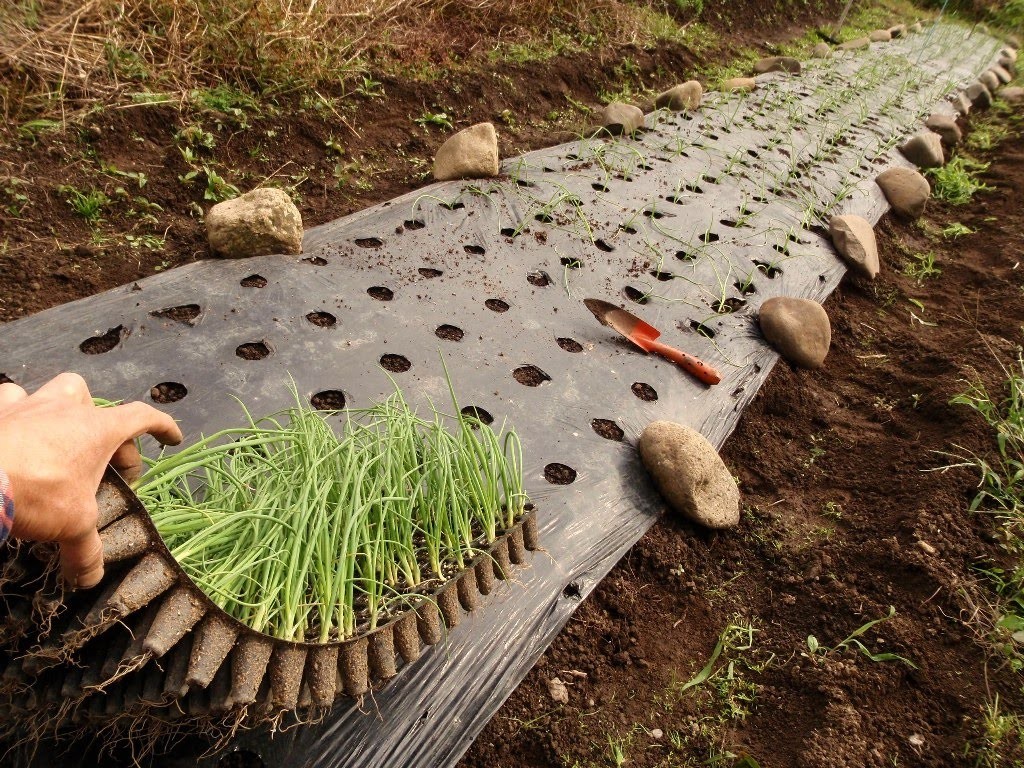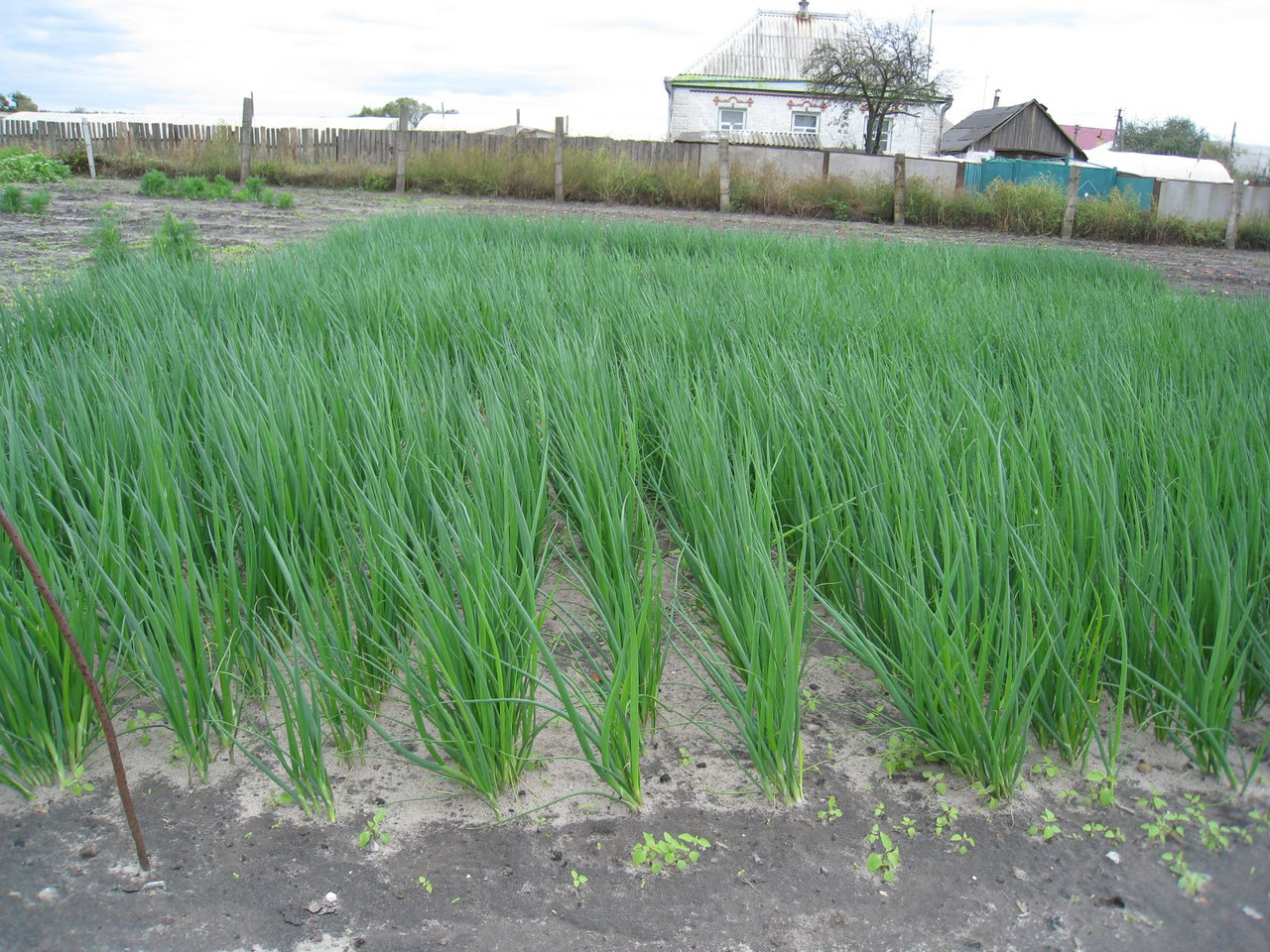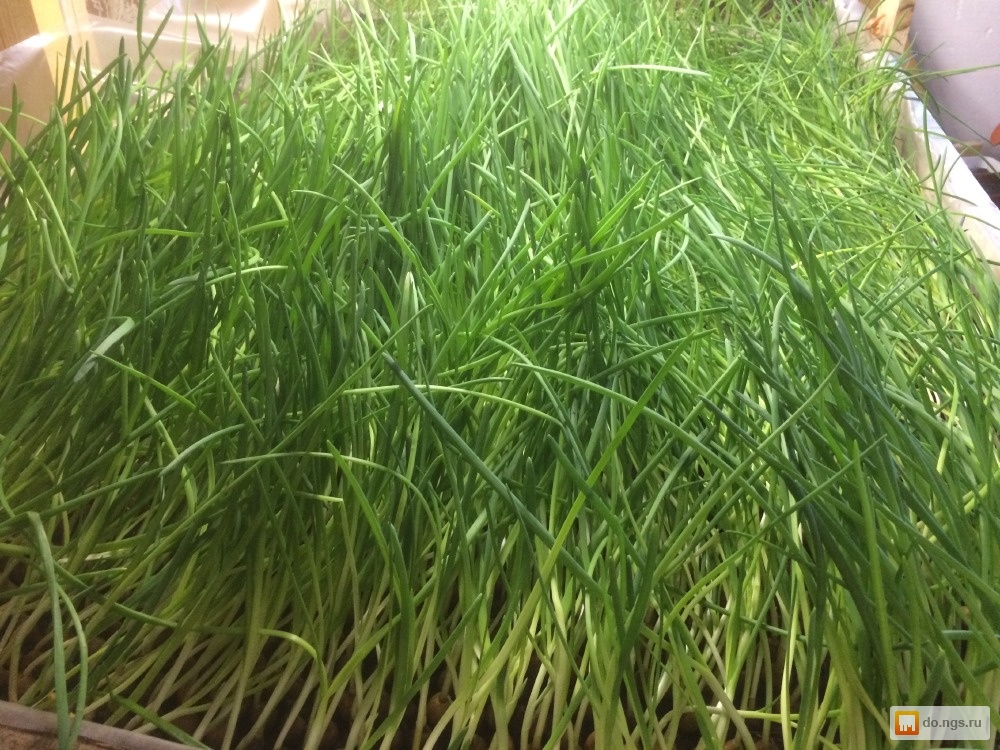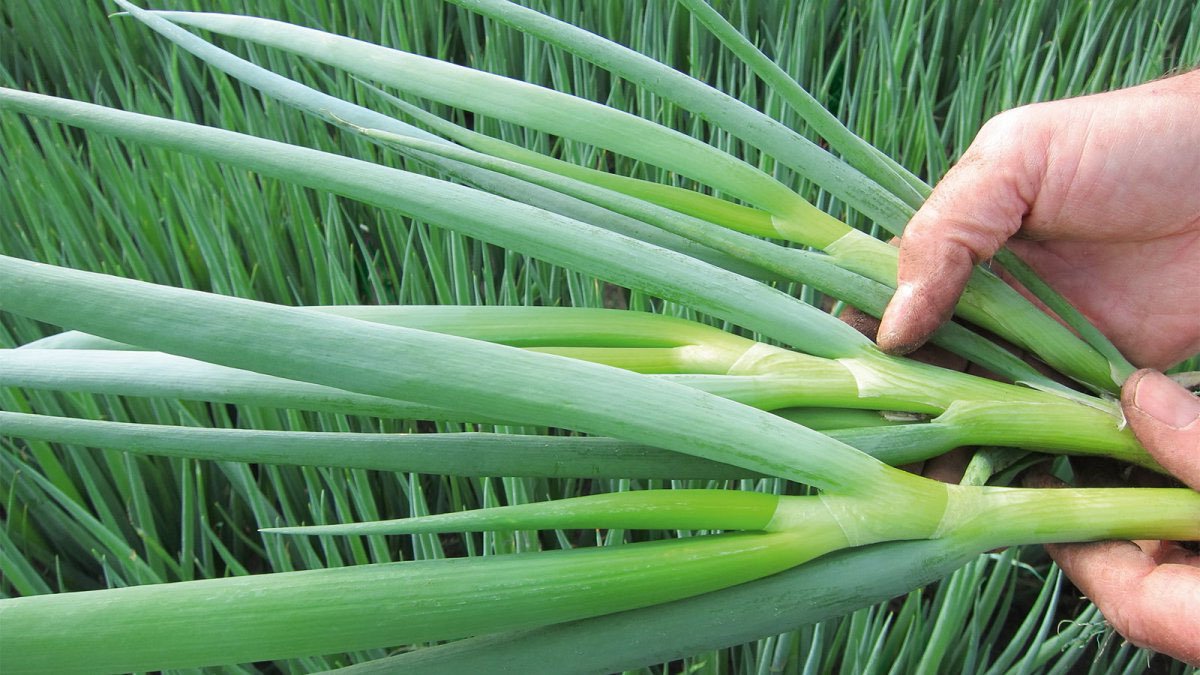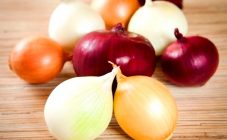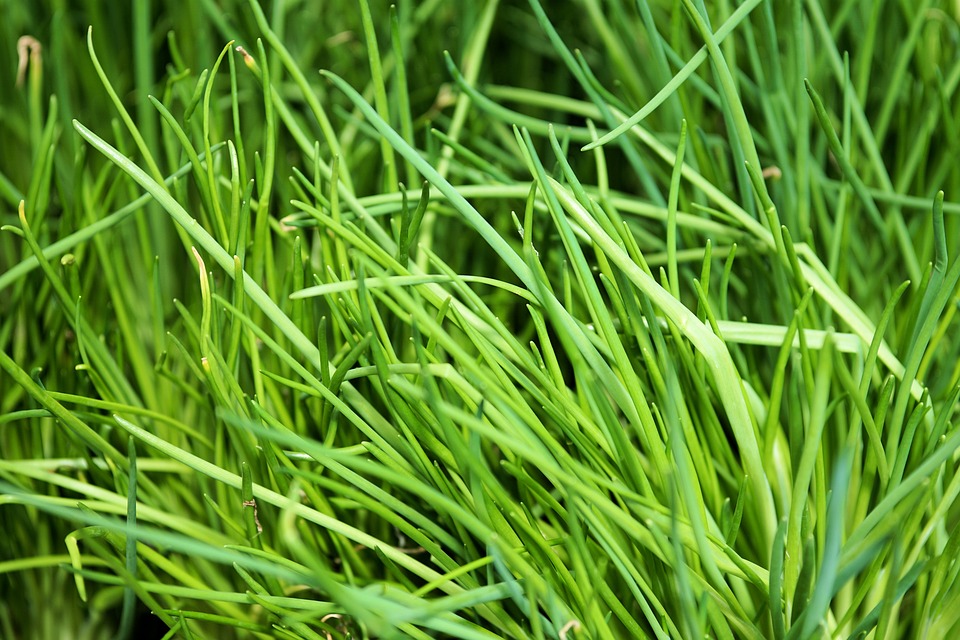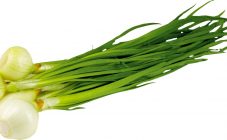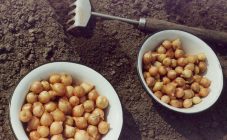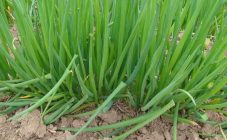Gardeners begin to grow onions on a feather in order to get not only a tasty addition to food, but also vitamins and minerals. The peculiarities are that you can get this product in different ways throughout the year. Active cultivation of onions for greens is carried out in the open field or at home, on a windowsill. The soil must be nutritious (you need to apply fertilizers before planting the onions). A prerequisite for obtaining a good harvest is loosening the land. Moisture indicators are moderate, light shade of the site is allowed (proximity to shrubs or small trees).
Agrotechnics
Landing
Summer and spring are the best times to plant onions on a green feather. Planting not with sowing, but with seeds will take more time to harvest. The choice in favor of this method is explained by the fact that the planting material is cheaper.
The correct planting of onions on greens assumes that the seeds will be specially prepared before planting. For this purpose, it is recommended to soak them in warm (18-20 degrees) water. Also, before planting onions on a feather, it is best to immerse the seeds in a solution of potassium permanganate to get rid of bacteria.
In order to grow exactly greens, and not an onion, you need to carry out the following steps:
- dig up last year's soil to make it light;
- fertilize with organic ingredients;
- create grooves in which the planting material is evenly placed (an interval of 30-40 cm must be observed).
If sowing is done in open ground, then summer (July) should be chosen for these events. As fertilizer or top dressing are used:
- urea;
- humus;
- superphosphate;
- peat;
- wood ash;
- potassium chloride.
It is not necessary to sprinkle with a large layer of earth, since the plant is not strong enough. The necessary elements of care are timely watering and weeding. Weeds and grasses will take away nutrients from onions. Additionally, you will need to protect against pests in order to exclude the likelihood of developing diseases.
Feature - with the onset of autumn, the emerging seedlings need to be covered to protect them from frost. Correct care and a good work result will be ensured by using the transplant method if the seedlings are too dense. In this case, you will need to slightly defuse the crops so that there is a 5 cm distance between the plants. Young green onions on a feather will be ready to eat next spring. Another way to harvest is to grow onion seedlings from seeds first, then transplant them into a greenhouse.
To get a good harvest for the next season, the pre-winter planting technique is used. The soil for planting is prepared in the fall. In this case, digging, loosening and removal of all weeds, and fertilization are also carried out. The optimal amount of fertilizer per 1 m²:
- manure - 1 bucket;
- super phosphates - 30 g;
- potassium substances - 15 g.
It is necessary to ensure that the distance between the bulbs (set is used) is at least 15 cm.The layer of earth or humus should be 2-4 cm on top.With the onset of frost, it is recommended to additionally cover the plantings with a layer of peat or straw, open and install a greenhouse in the spring. This is followed by the standard care elements: watering, loosening and weeding. In this case, the crop can be harvested as early as May 1-2.
Green onions can also be grown in spring. If this method of growing is chosen, then care and planting will be almost the same, excluding additional warming of plantings. The collection will take place in mid-June.
Sowing care
Keeping a garden is not difficult, you need to know the rules for caring for planted plants. In the case of onions on a feather, it is required to follow the rules of agricultural technology during the period of forcing the green mass - this will ensure high yields and a rich taste.
Care rules:
- disinfection;
- watering;
- loosening;
- top dressing;
- airing;
- protection from pests and diseases.
Elimination of viruses and bacteria is important not only during the preparation of planting material, but also after the seed has entered the open ground. To eliminate problems, you need to water the ground with a weak solution of potassium permanganate or copper sulfate.
Sufficient and correct watering - supply water to the plant as needed. During the season, this event will need to be held about 6 times. Excessive moisture can cause rotting processes, since the bulb is very sensitive to moisture.
Loosening is a necessary element of agrotechnical measures. It is especially true for open field landings. If carried out on a regular basis, the soil receives the required amount of nutrients and oxygen. The likelihood of a dense crust that slows down plant growth is reduced. Loosening is required 2-3 days after watering.
Top dressing should be carried out 2-3 times after planting the seeds. A solution of ammonium nitrate (40 g per 10-12 liters of water), complex fertilizer or mullein solution in a ratio of 1:20 are used. It is recommended to carry out this stage of care after cutting the greens, so that the bulb can form new feathers.
Airing is carried out if the main place for growing greenery is a greenhouse or a windowsill. In this case, you need to ensure that there are no drafts. It is also recommended to maintain normal humidity and temperature values.
Protection from pests and diseases is a special stage of plant care and agricultural technology. At the moment when the forcing of feather mass begins, or after planting the seeds in the ground, it is necessary to ensure that pests do not appear on the beds. Particular attention must be paid to the fact that the use of chemicals is not allowed. If the plantings are located near trees, then their trunks need to be whitened. Additional prevention - high-quality and timely weeding, removal of diseased specimens.
In some cases, onion feathers may turn yellow. If the process is accompanied by the fact that the plant is actively withering, then it may be affected by peronosporosis. In 90% of cases, the source of fungal infection is the bulbs used during planting - planting material. Getting rid of the problem involves eliminating diseased specimens, as well as using wood ash as fertilizer.
If the growing site is a home, then hydroponics will do. For this purpose, you will need to purchase special mats.
This indoor growing is suitable for mass production of greens that can then be sold. Even winter will not interfere with harvesting. Sevok is to be planted in the substrate. It will need to be fed with liquid fertilizers. After the onions are placed in hydroponics, they need to provide a special microclimate.Optimally maintain a cool temperature and light shade. Then, after the appearance of the root system, it will be necessary to add heat and light, which helps to activate the growth processes.
Varieties
In order to get a good harvest, you need to choose the right varieties and types of onions per feather. Batun (winter, sandy) shows good results. He is able to give 2-3 pastures of greenery per season.
The Schnitt-lukili variety is also popular. It is characterized by producing narrow yet aromatic greens. Leaves can reach a height of 0.5 m. Particular attention should be paid to the fact that this species makes special requirements for the timeliness of agrotechnical measures - watering and weeding, and good lighting must also be provided.
It is distinguished by high frost resistance and unpretentiousness to environmental conditions. Suitable for off-season forcing or windowsill cultivation.
If the question arises, which onion is better to plant on fragrant greens, then it is recommended to pay attention to Leek. This variety has wide, succulent leaves. The ready-to-eat product will delight you with its delicate taste. Features - the feather is visually similar to a garlic feather; instead of a standard bulb, a thick white bulbous stem will form.
You can also choose onions for herbs and different varieties of perennials - Slizun, Shallot. All of them are frost-resistant, quite unpretentious, which makes it possible to plant before winter, in the spring you can get the first harvest of greenery immediately after the snow melts. Indicators on taste are pleasant, there is no characteristic bitterness. These varieties are good for salads.
In 90% of cases, experienced gardeners prefer to plant multi-seed varieties on greens. They form 4-5 leaves each, which ensures a dense harvest.
To obtain greenery, it is recommended to plant varieties such as:
- Chebotarsky.
- Rostov.
- Ryazansky.
- Danilovsky.
- Strigunovsky.
- Spassky.
- Amber.
- Siberian.
- Sprint.
- Black Prince.
They are planted in the winter.
How to harvest
The harvesting process requires special attention. If the onion was planted in open ground, then before using or harvesting the feathers, you will need to shake off the ground. A different amount of greenery can be collected from 1 m², since this indicator depends on the selected variety and the implementation of planting care measures.
In most cases, harvesting is carried out when the plant releases feathers to a height of 30-35 cm. In this case, we can say that the onion is ready for harvesting. The method is to cut off the formed feathers, but leave the bulbs for re-distillation. Alternatively, you can cut off the feathers and dig up the bulbs. In the second case, it will be necessary to additionally remove the root system and carry out measures for harvesting onions.
Every gardener should know how to plant onions on greens, as they contain vitamins and useful trace elements. Using small onion sets for greens is easy at home - just plant them in a plastic wide container.
The main condition for growing green onions is optimal temperature and humidity, therefore, using special measures, you can get a harvest of green feathers throughout the year.
The most crucial moment is the preparation of fertile soil, therefore, fertilization and digging with the removal of large earth lumps are necessary. This will help allow water and nutrients to flow to the seed or bulb.You will also need to pay attention to the planting material - there should be no rot or damage in it. The sale of green onions will allow you to get additional income, so you need to properly use the available land, carry out timely harvesting in order to increase yields. If the tip of the feather begins to bend towards the ground, then soon you need to cut the greenery.
